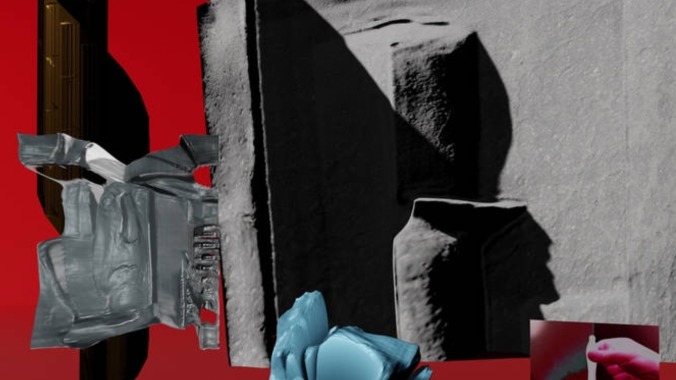Open Head Question Everything on What Is Success
The Kingston band’s gnarly post-punk offers troubling representations of chaos and conflict with experimental instrumentation.

In Pedro Almodóvar’s English-language debut The Room Next Door, Tilda Swinton’s character Martha sees the Hudson Valley as the ideal place to die. The house that Martha and Julianne Moore’s character, Ingrid, find outside Woodstock is sublime: ultra-modern, sprawling, outfitted with multiple suites and a luxury pool, all sited in the verdant hills. To many New York City residents, the Hudson Valley is that idyllic, quick getaway destination, removed from the city’s unstoppable movement but still outfitted with high-end health clubs and bookstores. For the Kingston-based quartet Open Head, the Hudson Valley is home, warts and all: Guitarist-vocalist Jared Ashdown is quick to recall a white supremacist march taking over the principal streets of his hometown one day in his youth. The Hudson Valley’s brilliant viewsheds contrast with repeated industrial collapse and a pivot toward serving elite tourists, presenting repeated local conflicts. Open Head’s gnarly post-punk comes from enduring racist and class-based violence, made tangible with experimental instrumentation and confrontational lyricism that’s trying to capture the chaos they endure. More often than not, the band nails it.
The opener on What Is Success, “Success,” is both a sonic and thematic thesis statement, and a disorienting one at that. The song is a dastardly mix of live and sampled drums, synths grooves and unpredictable noises that hum and lurch while frontman Jared Ashdown paces over the concept of success and who’s weaponizing it. Ashdown’s vocals sound like a tongue-in-cheek onstage soliloquy as he emphasizes “What is success / What is the point / I don’t see it / I don’t know it.” They get a glimpse of success on “N.Y. FRILLS,” a no-wave tune inspired by guitarist Brandon Minnervini’s experience crafting and delivering designer shelving to Manhattanites. The island’s colossal wealth—and the depravity of detachment that accompanies it—sends the singer sinking “lower still.” The band’s critical utterances feel like subliminal messages compared to the thumping progress of the guitars and drums, which continuously sink their teeth deeper and deeper over a punishing four minutes.
As much as post-punk is central to What Is Success (Glenn Branca is a shared favorite among the foursome), much of the album grew from a general dissatisfaction with guitar music. Recreationally, the band members lean towards underground hip-hop and experimental dance music, and throughout, band members drop their usual instruments for synths and samplers. “Catacomb” is a disorienting example: Trigger pads and processed samples help generate a gurgling underbelly of sound over which Minnervini’s guitar and Dan Schwartz’s drums work in partnership to generate a fearful, danceable groove. “House” is even slicker, with its complete abandonment of anything “angular” towards something that’s somehow both atmospheric and pointed. The synthetic bass tones howl like a revving engine while the drums and effects pop with a ghastly energy. The speedy, industrial feel of the song coincides well with lyrics imagining a tortured cyborg in desperate search of respite. It’s an amplification of a feeling all too familiar, recalling the best of science fiction.
-

-

-

-

-

-

-

-

-

-

-

-

-

-

-

-

-

-

-

-

-

-

-

-

-

-

-

-

-

-

-

-

-

-

-

-

-

-

-

-








































